The Crown Jewels Heist & Other Secrets Behind the Coronation Regalia
The Crown Jewels consist of more than 100 objects with 23,000 gemstones - from scepters, orbs, and swords to maces and even a cursed diamond! Value? A cool $4bn - minimum.
Soldier, spy, and rebel republican Colonel Thomas Blood was embroiled in a 17th century plot to steal the Crown Jewels and shoot Charles II as he skinny-dipped. On May 9, 1671, Blood’s crew attempted to steal the Coronation Regalia from the Tower of London. In some accounts, Blood fooled the aging Jewel Housekeeper into showing him the precious stones. In other accounts, Blood and his men viciously attacked the guard and seized the Orb, Sovereign's Scepter, and other treasures.
In any event, the King’s daughter raised the alarm and the thieves were captured. King Charles II now had a dilemma. Should he hang Colonel Blood or use him to his advantage? Rather than punishment, the King offered Blood land and £500 a year for life. In exchange, Blood was to inform on traitors who conspired to overthrow Charles II, acting as a counterintelligence officer.
Blood certainly wasn’t the only spy in the palace (as Anthony Blunt would later prove) nor the only conspirator. Here are some of the fascinating tales behind the glittering 142 objects that make up Britain’s Crown Jewels.
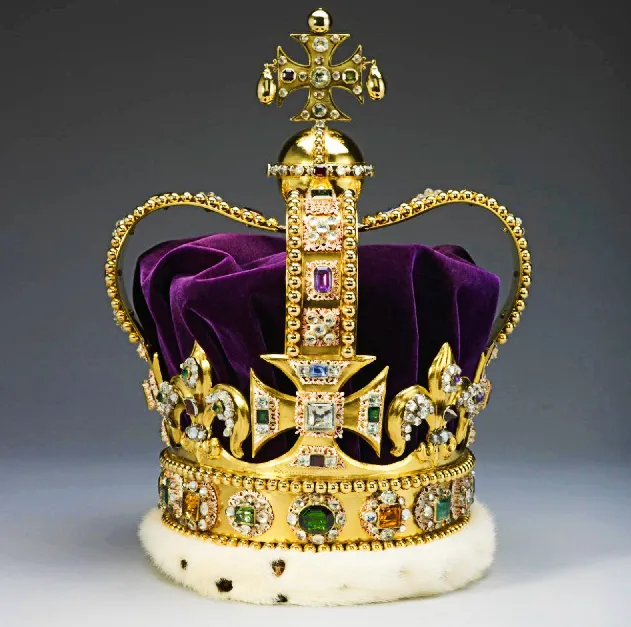
St Edward's Crown, 1661, the Crown Jewels’ centerpiece
At the moment of King Charles III’s Coronation, he will wear the solid gold St Edward's Crown which weighs nearly 5 pounds and is adorned with semi-precious stones. It was last used for crowning Elizabeth II in 1953.The St Edward's Crown was made to replace the medieval crown melted down by parliamentarians in 1649, after King Charles I was convicted of treason and executed.
According to custom, only three people are permitted to touch the crown: the queen, the Archbishop of Canterbury, and the crown jeweler.
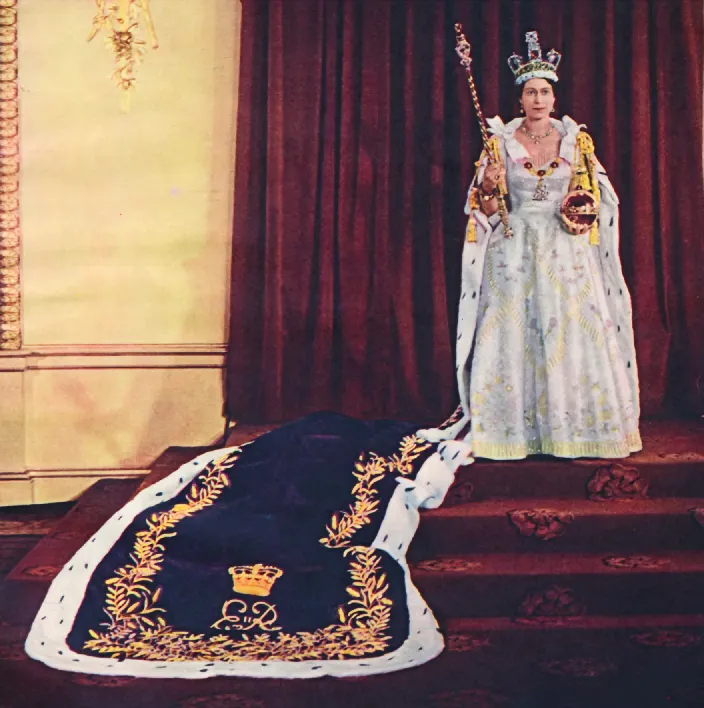
The Imperial State Crown, 1937

Set with no fewer than 2,868 diamonds in silver mounts, the Imperial State Crown boasts the Cullinan II, the second-largest stone cut from the Second Star of Africa. This is the crown the Monarch wears at the end of the Coronation ceremony.
It was made for the Coronation of King George VI in 1937 and mounted with historic stones to which a number of legends are attached. These include the St Edward's Sapphire legend that Edward the Confessor (1042-66) was asked for alms by a beggar and the King presented him with a ring. The beggar turned out to be St John the Evangelist, who asked two English pilgrims in Syria to return the ring to St Edward.
The King is said to have been buried with the Sapphire in Westminster Abbey in 1066. In the 12th century, his tomb was opened and the ring removed.
"The brand new social experience where you activate your gaming skills as you train like a spy."
- TimeOut
Take on thrilling, high-energy espionage challenges across different game zones.

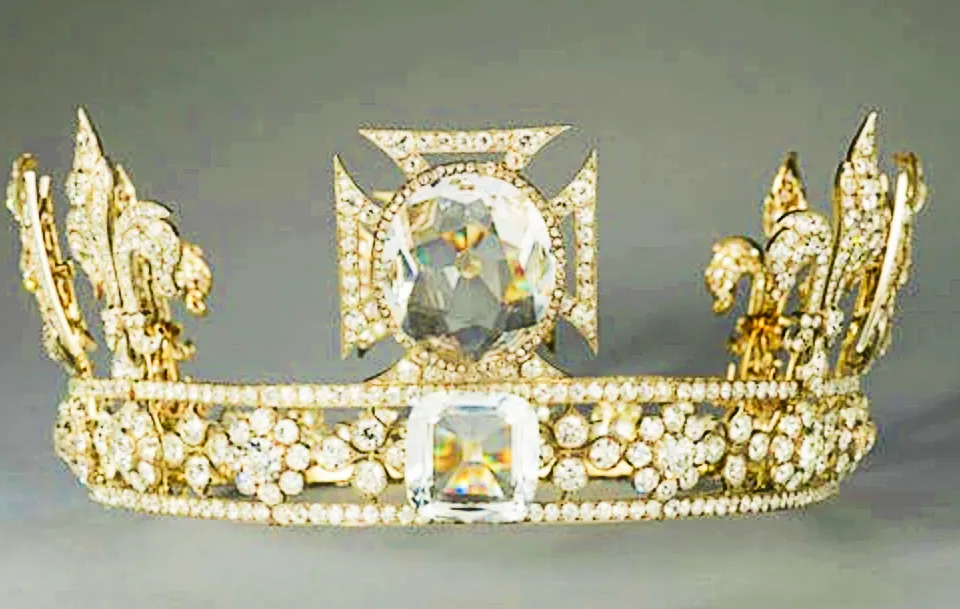
St Mary’s Crown, 1911
Queen Camilla will wear a crown of silver, gold, diamonds, quartz crystal, velvet, and ermine made for Queen Mary, also a Queen Consort, who was crowned alongside King George V in 1911. Lined with gold, and set with 2,200 diamonds, the crown is mainly brilliant-cut, with some rose-cut. Mary became Queen Consort in 1910 and worked tirelessly to promote charitable causes, particularly during WWI. She was distressed that her son, Edward VIII, abdicated the throne in 1936 before his own Coronation to marry Wallis Simpson and refused to meet his new bride.
When Edward VIII abdicated, he reportedly took with him the Prince of Wales Crown, which he had worn at the Coronation of his father. It was returned to the Jewel House on his death.
The Delhi Durbar, 1911

During the British Raj, 1858-1947, a celebration (Durbar) marked the Coronation of a new Emperor or Empress of India. King George V and Queen Mary were the first (and only) royals to attend the 1911 celebration but the Imperial State Crown Jewels were not to leave Great Britain so the Queen needed a new jeweled crown (as one does).
A new diadem was commissioned from Garrard for Queen Mary to wear at the event. The Delhi Durbar has rarely been worn since, although Queen Camilla took a shine to it in 2005 and wore it for her first official State Banquet at Buckingham Palace as a member of the Royal Family.
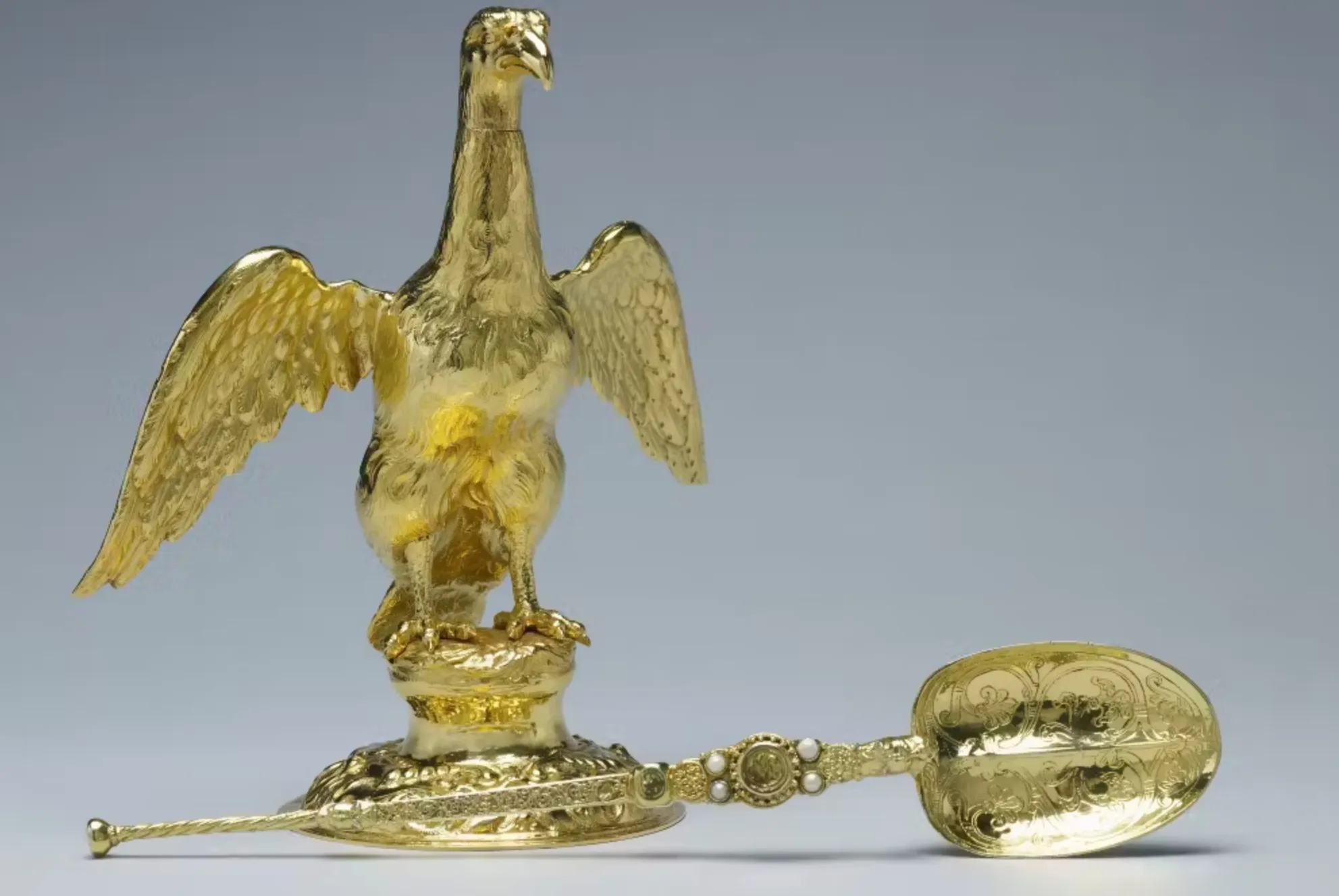
The 12th century Coronation Spoon, shown with the Ampulla, 1661
The Coronation Spoon is used for anointing the Monarch with holy oil. It is the oldest object in the Crown Jewels following the destruction of most of the Coronation regalia in the 17th century. (See the Royal Scepter below for the historical details.)
It was first described in 1349, but even then considered an antique. The spoon is believed to date back to the second half of the 12th century when Richard the Lionheart lived. A Yeoman of Charles I’s Wardrobe originally bought the spoon for 16 shillings (about 12 cents) and it is thought to have initially been used to mix water and wine and later, in 1603, to anoint the Monarch during James I’s Coronation.
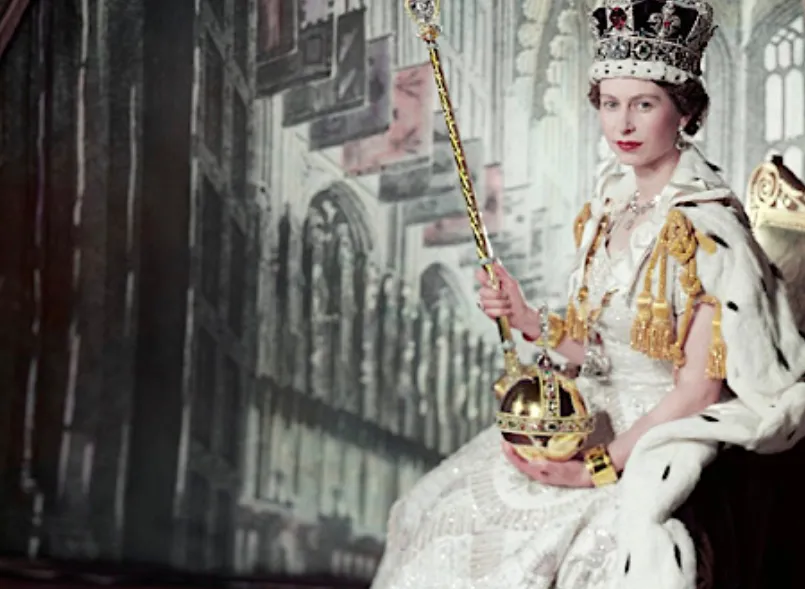
The Sovereign’s Orb, 1661

During the Coronation of Queen Elizabeth II, the Sovereign's Orb (held in the Queen’s left hand) was presented as a symbol that the Monarch’s power is derived from God.
The Sovereign’s Orb is a gold sphere adorned with bands of emeralds, rubies, sapphires, diamonds, and pearls representing the Christian world and the three continents known in the Middle Ages; and a set of jewel-encrusted swords.
The Orb is placed on the altar before the moment of crowning.

The Royal Scepter with Cross, 1661
The bejeweled 1661 golden scepter weighs 3 pounds and is laden with 333 diamonds, 31 rubies, 15 emeralds, 7 sapphires and other precious gemstones including the Great Star of Africa (Cullinan I), the largest clear-cut diamond in the world at 530.2 carats (some value the scepter alone at $400m).
Monarchs began collecting Regalia in the time of Edward the Confessor who deposited treasures in Westminster Abbey for safekeeping. By the time Charles I was convicted of treason and executed January 30, 1649, the monarchy was temporarily abolished. Many of the original Crown Jewels were sold or destroyed under Oliver Cromwell’s order that the orb and scepter stood for the 'detestable rule of kings'. All gemstones were removed and sold. The precious metal was melted at the Mint to make coins, which were then used to pay the army that had defeated the King.
When Charles II returned to the throne in 1660, the Regalia was remade based on meticulous records of what had been lost.
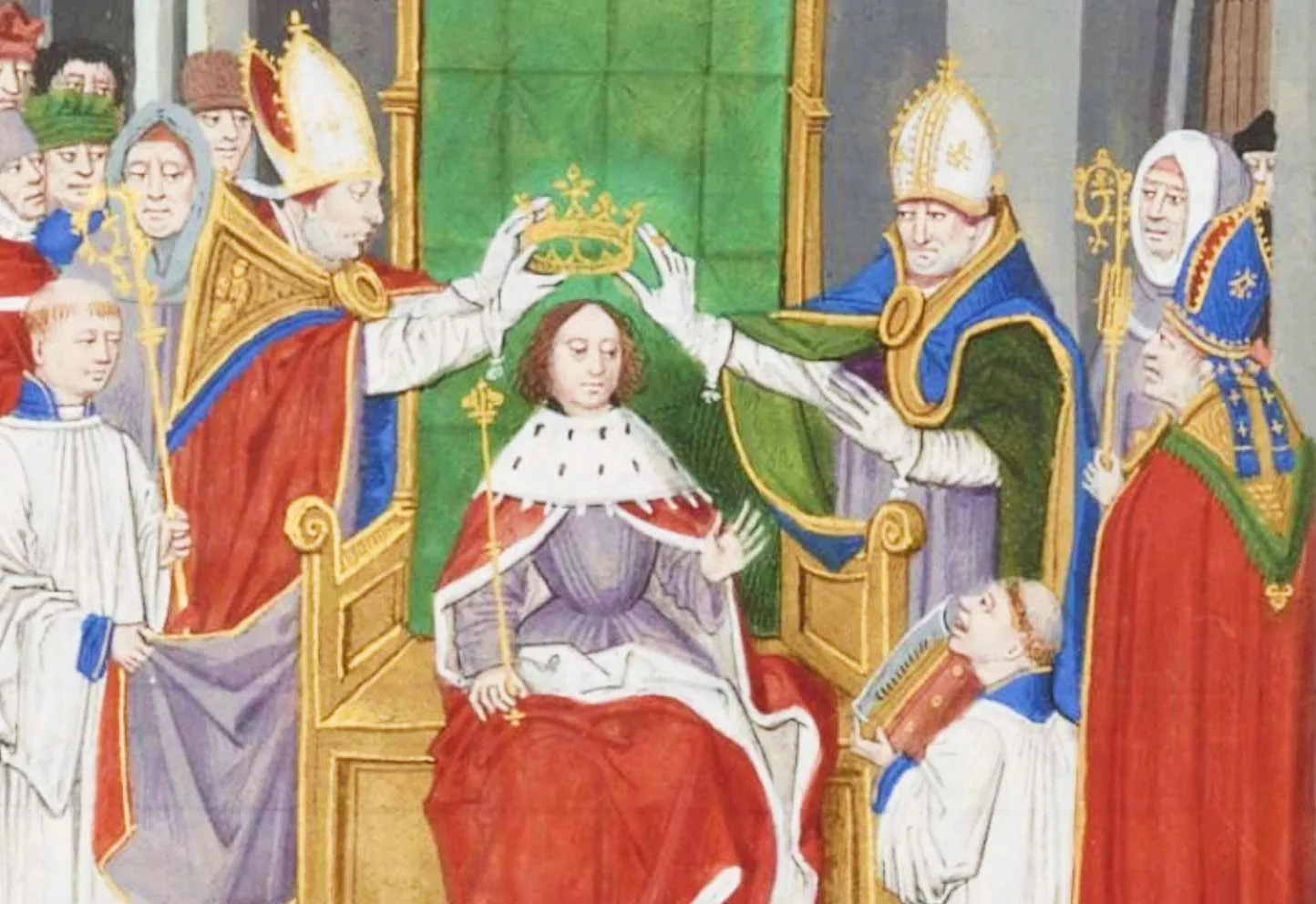
Edward III & Henrietta Maria - Crown Booty
The Crown Jewels weren’t always safely stored away for future generations, according to the official website. Edward III (1312-1377) pawned jewels to pay his troops during an overseas campaign. Charles I's wife Henrietta Maria (1609 -1669) also pawned the Crown Jewels in Holland at the beginning of the Civil War to raise money for her husband’s war efforts. King James I’s wife, Anne of Denmark, is said to have borrowed items of the Crown Jewels to use as props for plays performed at court. Pieces were sometimes even returned broken.
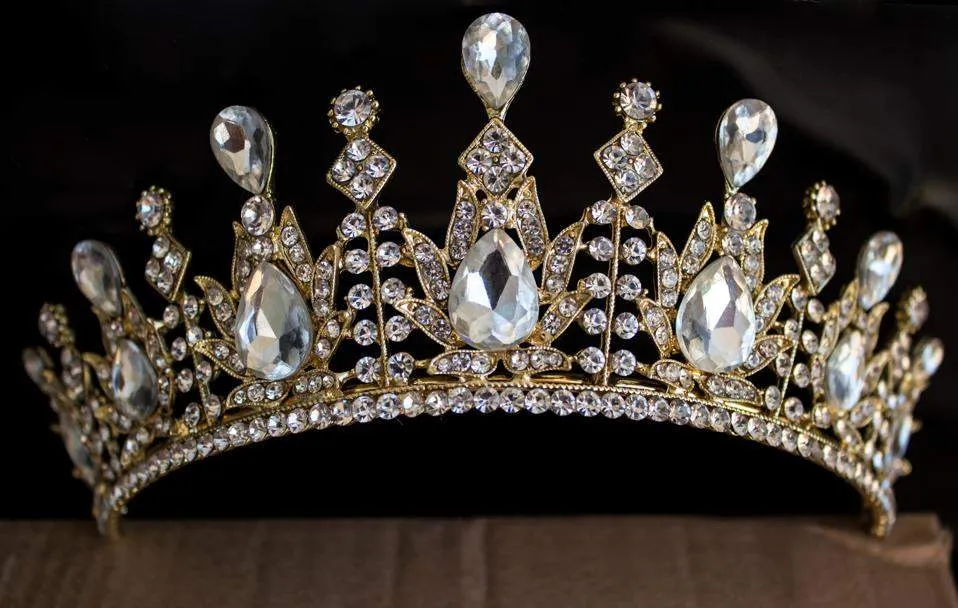
King John’s Crown Jewels now lost
Some jewels have also been lost. Those who recall John, King of England from 1199 to 1216, will likely remember a poor, greedy king immortalized in folklore as the main villain in the Robin Hood tales. King John infamously lost the Crown Jewels while trying to cross The Wash estuary in 1216. It was unexpectedly submerged by water. Waves sank wagons carrying food and, reportedly, the Crown Jewels. More than 800 years later, King John’s hoard has still not been found.
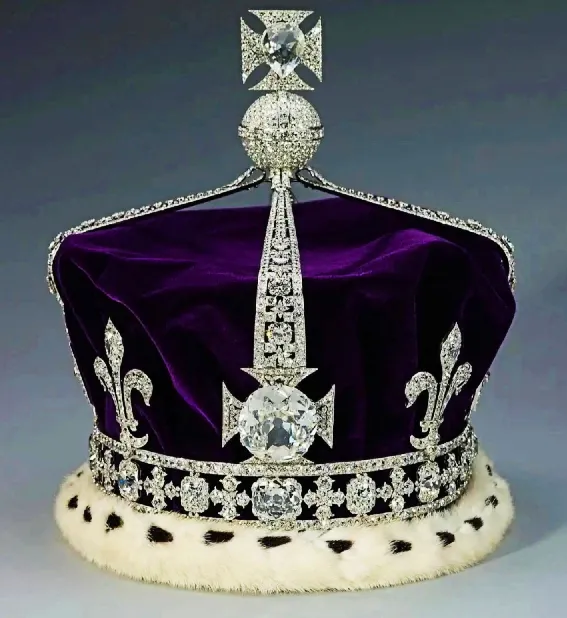
The 186-carat ‘cursed’ Koh-i-Noor diamond
Discovered in the 14th century, the Koh-i-Noor diamond belonged to the Mughal ruler who built India’s Taj Mahal. Shah Jahan had the 186-carat diamond placed into his famous Peacock Throne but he was overthrown and imprisoned by his own son before he could enjoy the gem. When the British took control of India’s trading posts, the stone was thought to have been given to (or possibly taken by) Queen Victoria. In 1911 she set the Koh-i-Noor in the Imperial Crown. According to a 1306 Hindu text, the stone’s curse is only fatal to men: ‘Only God or a woman can wear it with impunity.’
Until Queen Victoria’s reign, it was common for the gems in the Crown Jewels to be rented for the Coronation for four per cent of their value.

Tower of London
Although Colonel Thomas Blood is the only would-be thief to get his hands on the Crown Jewels so far, the Royals aren’t taking any chances. The reigning Monarch holds the Crown Jewels in trust at the Tower of London. When not in use, they are on display and are viewed by about 2.5m people each year. During WWII, the Crown Jewels were hidden in a secret location that has never been disclosed.
SPYSCAPE+

Join now to get True Spies episodes early and ad-free every week, plus subscriber-only Debriefs and Q&As to bring you closer to your favorite spies and stories from the show. You’ll also get our exclusive series The Razumov Files and The Great James Bond Car Robbery!


Gadgets & Gifts
Explore a world of secrets together. Navigate through interactive exhibits and missions to discover your spy roles.
Your Spy Skills
We all have valuable spy skills - your mission is to discover yours. See if you have what it takes to be a secret agent, with our authentic spy skills evaluation* developed by a former Head of Training at British Intelligence. It's FREE so share & compare with friends now!
* Find more information about the scientific methods behind the evaluation here.


Stay Connected
Follow us for the latest
TIKTOK
INSTAGRAM
X
FACEBOOK
YOUTUBE